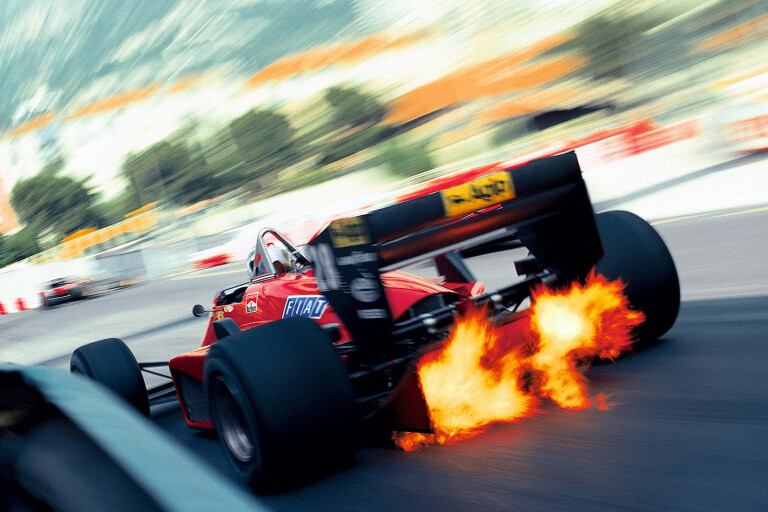
No one paid much attention to the single-car Renault entry at the 1977 British Grand Prix.
This story was originally published in our March 2014 issue
Resplendent in Renault’s corporate yellow, white and black and driven by Jean-Pierre Jabouille (who, incidentally, also designed the car) Renault’s RS01 made history at Silverstone that day as the first turbocharged car to race in F1.
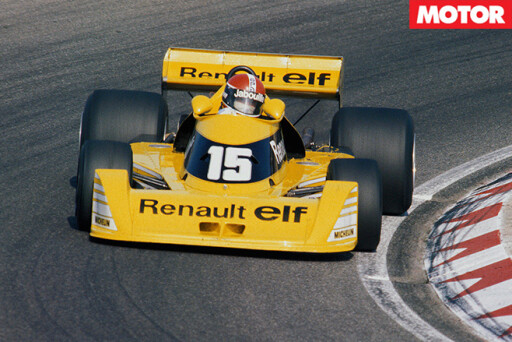 Powered by a 1.5-litre V6 Renault Gordini engine, the RS01 quickly became a joke in pitlane. Nicknamed ‘the yellow teapot’ for its propensity to detonate engines amid huge plumes of smoke, Renault nevertheless persisted with development, firm in its belief that turbocharging was Formula One’s future.
Powered by a 1.5-litre V6 Renault Gordini engine, the RS01 quickly became a joke in pitlane. Nicknamed ‘the yellow teapot’ for its propensity to detonate engines amid huge plumes of smoke, Renault nevertheless persisted with development, firm in its belief that turbocharging was Formula One’s future.
In the hands of Jabouille the RS01 failed to finish every race in 1977 and barely made it to the finish line in all but one race in 1978 (Jabouille scoring the first points for a turbocharged car with a fourth place in the US grand prix).
 That all changed in 1979, when Jabouille captured pole in South Africa, the season’s third race. Another DNF followed but Renault had proved that with development, the new technology had a well of untapped power and speed.
That all changed in 1979, when Jabouille captured pole in South Africa, the season’s third race. Another DNF followed but Renault had proved that with development, the new technology had a well of untapped power and speed.
The RS01 raced until the 1979 Belgian Grand Prix before Renault retired the real-world test mule and rolled out its successor, the RE10, at the following race in Monaco.
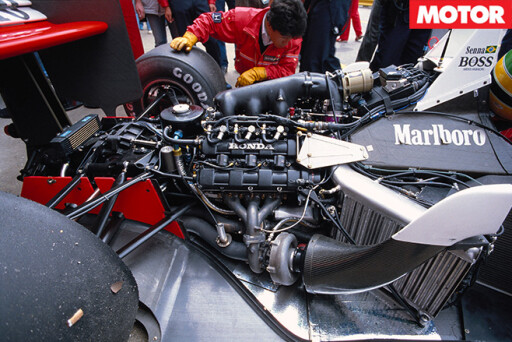 But it was at the very next race, almost two years after its 1977 debut, that turbocharging realised its full potential, fittingly enough at the French Grand Prix, where Jabouille and Renault were untouchable.
But it was at the very next race, almost two years after its 1977 debut, that turbocharging realised its full potential, fittingly enough at the French Grand Prix, where Jabouille and Renault were untouchable.
Jabouille won easily, a first win for himself, for Renault and for turbocharging. It was an historic victory, overshadowed somewhat by the epic battle for second between Gilles Villeneuve and Rene Arnoux (YouTube ‘Villeneuve Arnoux Dijon’ if you haven’t seen it).
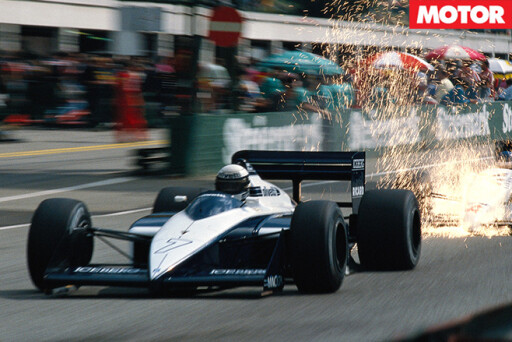 Suddenly, the same people who had pointed and laughed from the comfort of their normally-aspirated-equipped garages sat up and took notice. Within three years, nearly every team in pitlane had switched to turbocharging and F1 was never the same again.
Suddenly, the same people who had pointed and laughed from the comfort of their normally-aspirated-equipped garages sat up and took notice. Within three years, nearly every team in pitlane had switched to turbocharging and F1 was never the same again.
The Glory Years
Following Renault’s success, it didn’t take long for the world’s major car manufacturers to come knocking on F1’s door. In quick succession, Porsche, BMW and Honda all entered the fray as engine suppliers while Ferrari too knew it had no option but to ditch its beloved V12 in favour of race-winning turbo tech.
 Still, naturally-aspirated cars continued to race and, even more remarkably, continued to win while turbo technology found its feet. But by 1982, the writing was on the wall.
Still, naturally-aspirated cars continued to race and, even more remarkably, continued to win while turbo technology found its feet. But by 1982, the writing was on the wall.
Keke Rosberg won the title in his Cosworth-powered Williams, but he only won one race and was helped, in part at least, by turbo unreliability (those fiery detonations continued unabated) and the tragic (separate) accidents that claimed Gilles Villeneuve’s life and ended Ferrari teammate Didier Pironi’s career. Until then, Ferrari had been on track to claim the first world championship for a turbo car.
 Instead, we had to wait another year for Nelson Piquet, Brabham and BMW’s tiny 1.5-litre donk to achieve the feat. Derived from the same block that powered its small road cars, BMW’s and Brabham’s engineers fine-tuned that little screamer until it, allegedly, pumped out around 900hp (671kW) on full boost in qualifying trim. Just five years earlier, extracting 500hp (373kW) was considered a good power output. The turbo war was well and truly on.
Instead, we had to wait another year for Nelson Piquet, Brabham and BMW’s tiny 1.5-litre donk to achieve the feat. Derived from the same block that powered its small road cars, BMW’s and Brabham’s engineers fine-tuned that little screamer until it, allegedly, pumped out around 900hp (671kW) on full boost in qualifying trim. Just five years earlier, extracting 500hp (373kW) was considered a good power output. The turbo war was well and truly on.
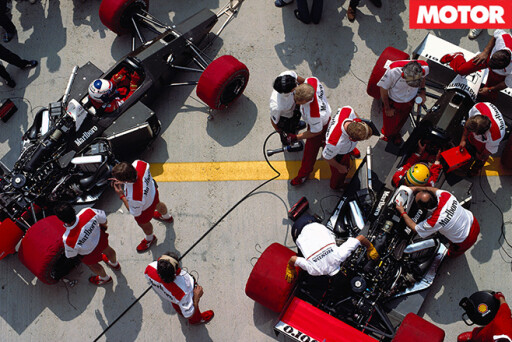 Championships for McLaren (using Porsche engines) followed before a sleeping giant from Japan finally got its act together to propel Nelson Piquet to the 1987 world title in his Williams-Honda.
Championships for McLaren (using Porsche engines) followed before a sleeping giant from Japan finally got its act together to propel Nelson Piquet to the 1987 world title in his Williams-Honda.
But behind closed doors, McLaren’s wily boss Ron Dennis was wooing Honda and when 1988 rolled around, a potent partnership – McLaren, Honda, Ayrton Senna and Alain Prost – executed a near-perfect season, the team winning 15 of that year’s 16 grands prix. It was as near to perfection as any team has come in F1 but it was also turbocharging’s swansong.
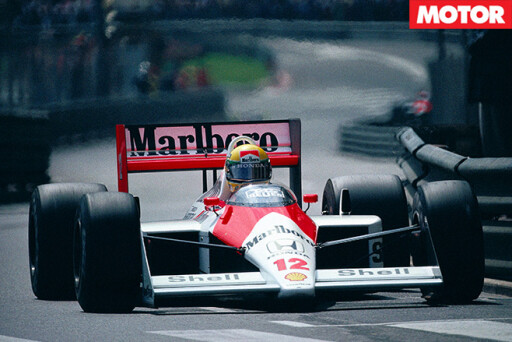 When engine outputs reached astronomical levels in 1986 – the BMW engine is widely believed to have topped out at 1044kW – the FIA moved to rein in manufacturers, firstly by limiting boost in 1987, then by banning turbocharging at the end of 1988. It was a short-lived era, just 11 years, but it changed F1 forever. And now, it’s back.
When engine outputs reached astronomical levels in 1986 – the BMW engine is widely believed to have topped out at 1044kW – the FIA moved to rein in manufacturers, firstly by limiting boost in 1987, then by banning turbocharging at the end of 1988. It was a short-lived era, just 11 years, but it changed F1 forever. And now, it’s back.

COMMENTS